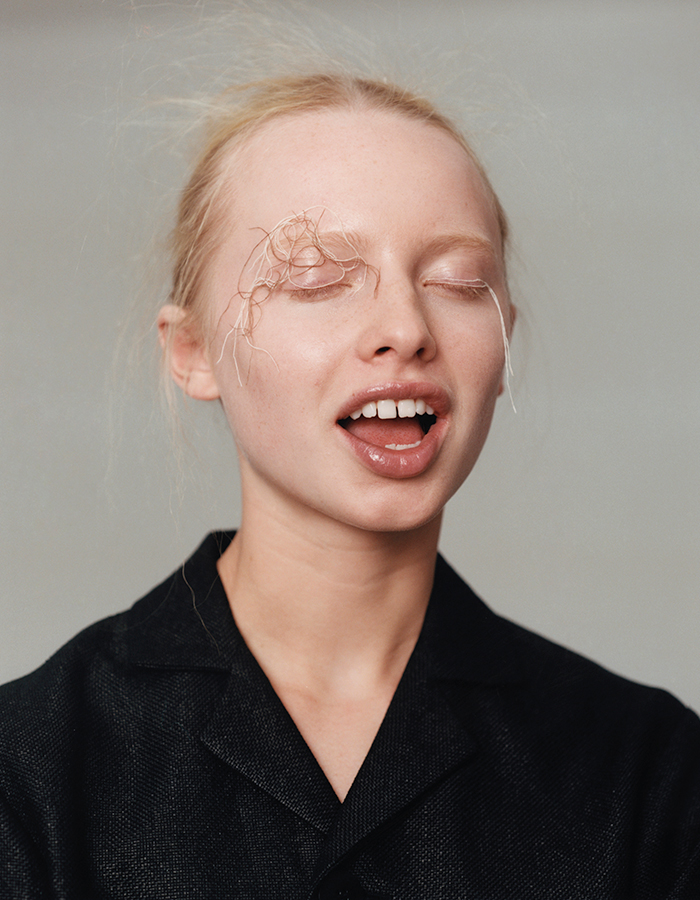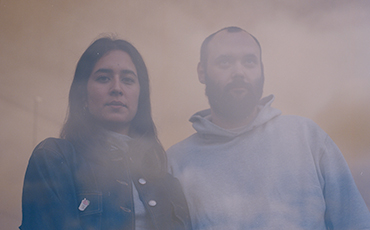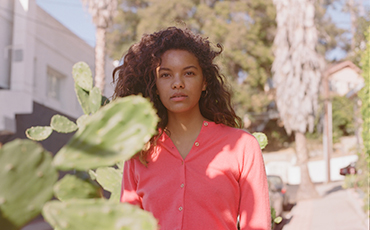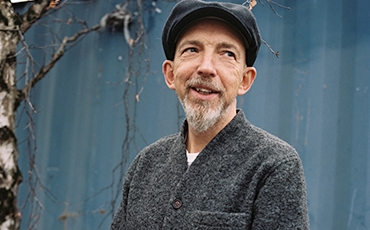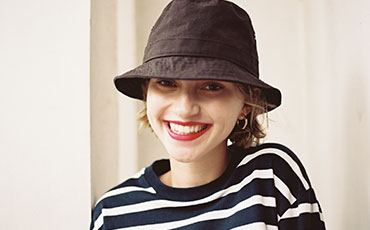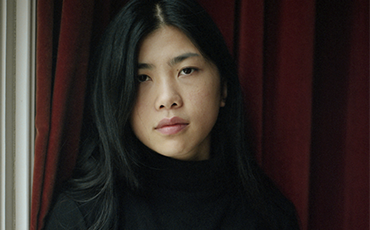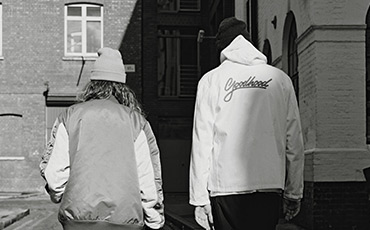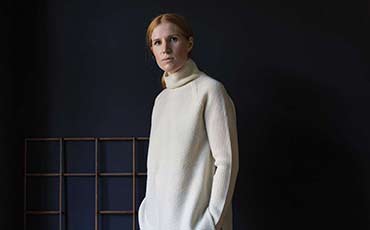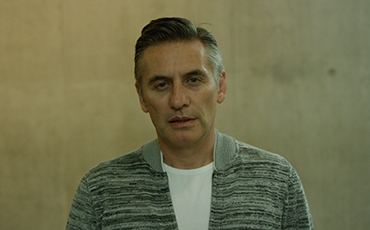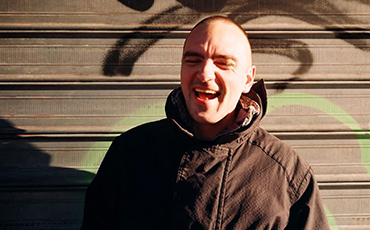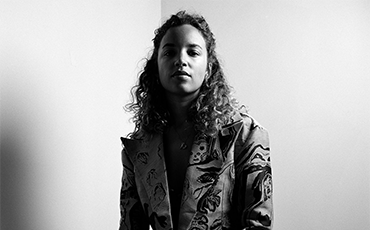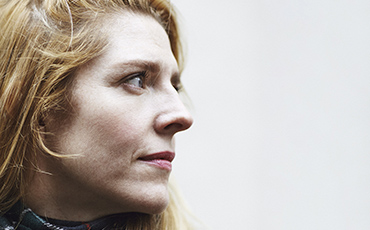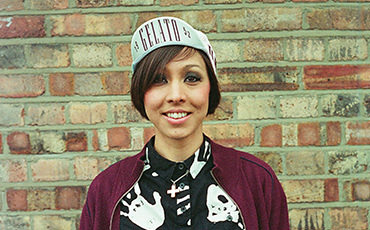04: Culture
The Brain & The Scissors
Words by KIOSK.
Photography by Rory van Millingen
Lookbook Photography by Tom Johnson
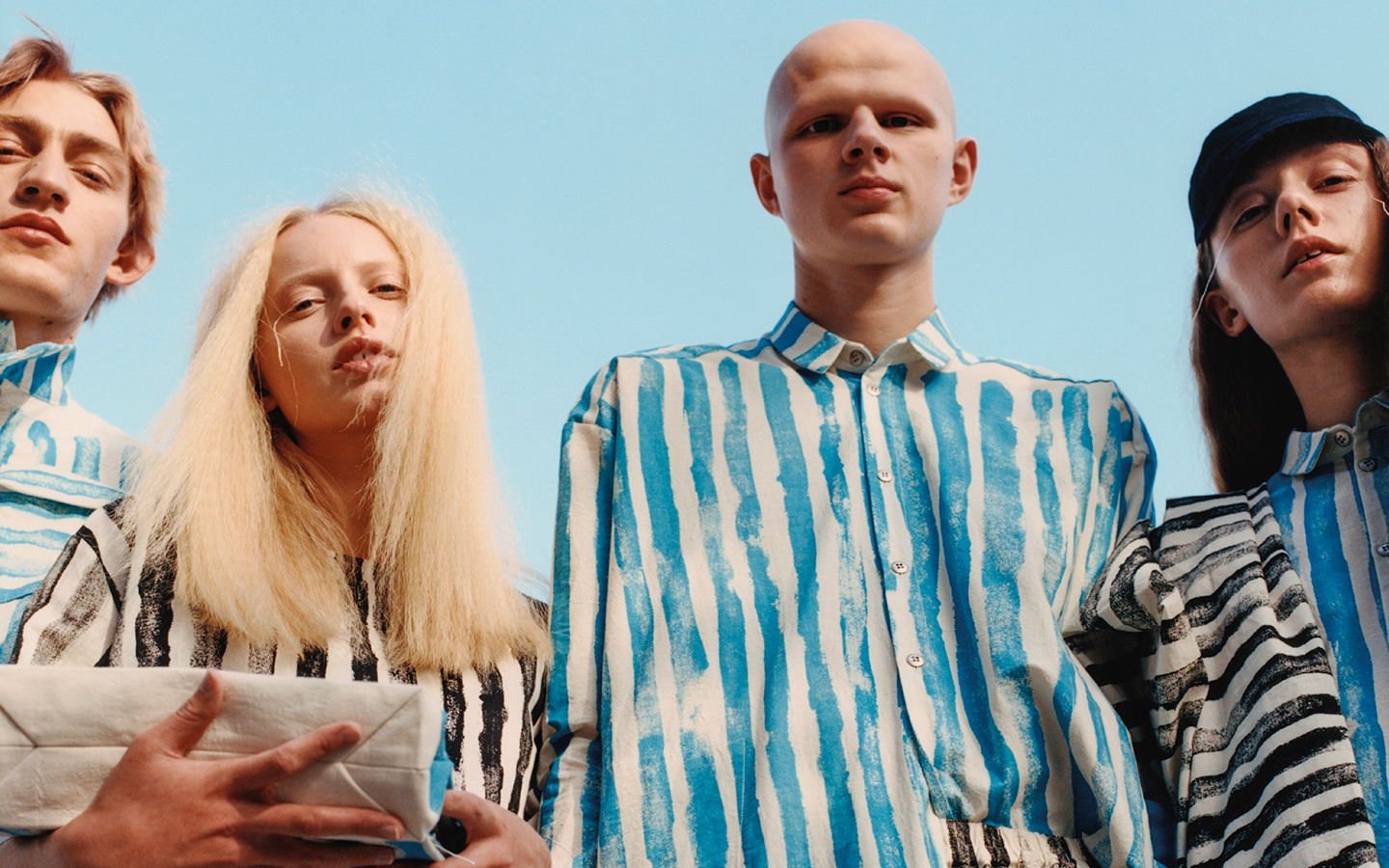

As soon as you walk into the House of Toogood, a tall and thin Victorian building where each floor is dedicated to one of the many aspects of the studio, you get a sense of collaboration, of interplay between the many disciplines and outputs that Toogood offers. Everything in the building has some connection to the studio, from the shelves housing Faye Toogood’s archive of materials to the cast concrete sink in the kitchen, every cup, piece of furniture and painted surface.
First established by Faye Toogood, best known for her interiors, sensory installations, furniture and product design, the House of Toogood is also home to the clothing operation that Faye started with her sister Erica in 2013. Theirs is a symbiotic relationship where Faye’s concepts and ideas are brought to life not just by her sister but by an extended family of architects, designers and artists, all exchanging ideas and influences between the floors of the building. Faye and Erica Toogood are different sides of the same coin. When they talk about their work you get the sense that they are led as much by instinct as anything else, bringing their particular trade to bear on the work.
Faye: “Our first proper collection started as a project of eight coats. We wanted to make a simple uniform, something of quality and British made. Erica wanted to think of the trades as a guide, and though Irving Penn’s Small Trades was definitely on the table, the patterns are new and come from her. We wanted clothes that didn’t adhere to a trend. The first collection did quite well and we found ourselves working on the next piece.â€
Erica: “The feedback was, ‘The coats are amazing; where is the rest?’ So by the Autumn we had produced some trousers and they went really well, we were amazed. We were able to express the entire silhouette.â€
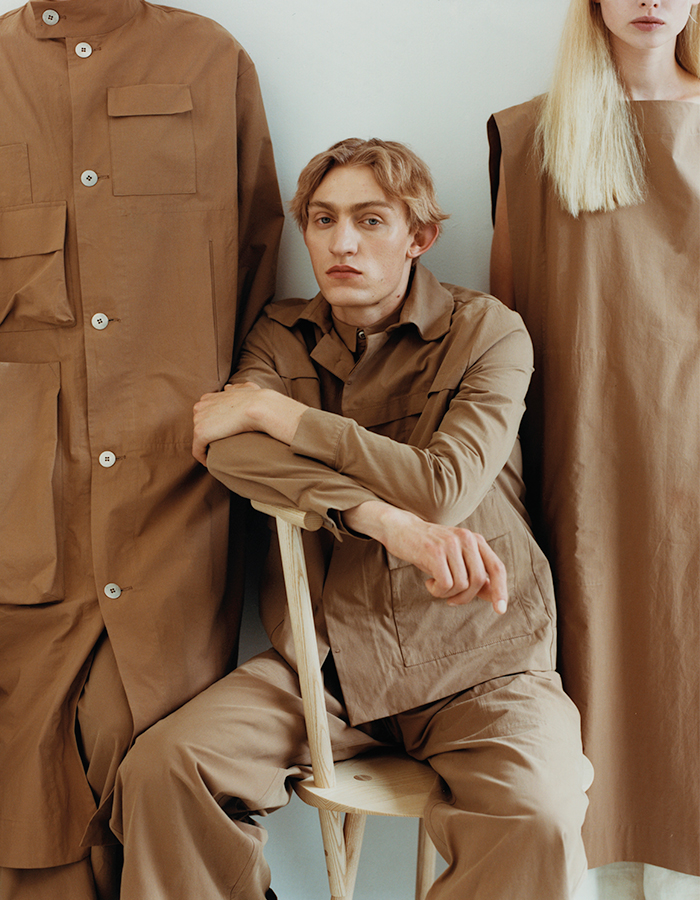

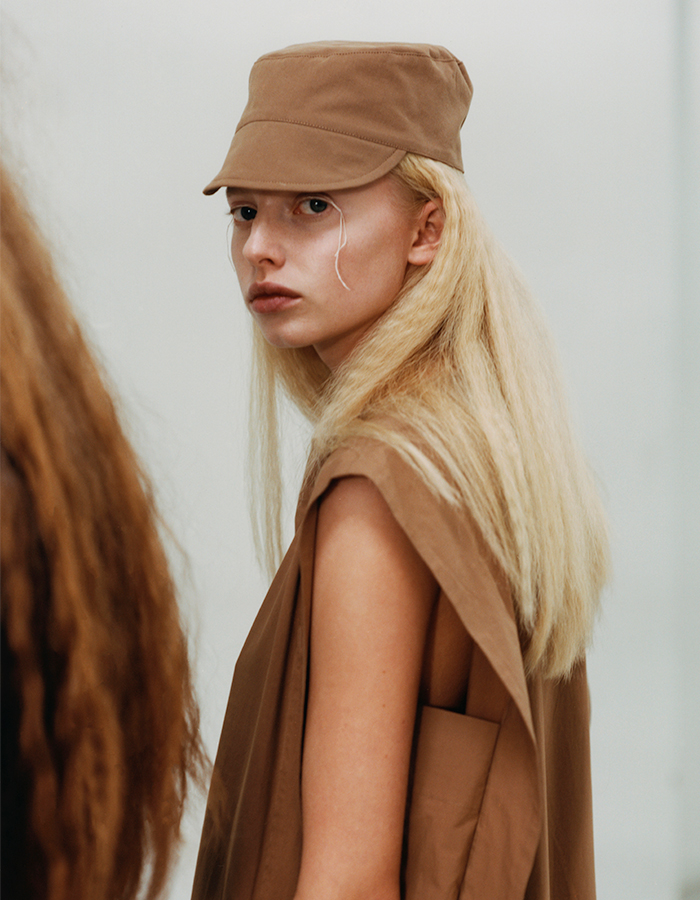

"We marry up together and complement each other."
KIOSK: How has the process evolved?
Erica: “I think the approach that we have to the garments has never been one that follows the traditional fashion industry method. Faye and I have kind of made up the way that we do things in our own way and she definitely sees the clothes almost like products. This is where the passport that goes in every single garment comes from. It references the trade, the designers and the four different makers of each piece - cutter, seamstress, presser and hand finisher. Finally there’s a space for the wearer to make it their own. So there's this documentation of legitimacy in every single piece which is similar to that of an artwork. It's great to see that concept run through everything we do - all the way through the furniture and the fashion.â€
[K]: How does the furniture relate to the clothing?
Erica: “Faye has made this home that we all work in. You and I are sat at the equivalent of the kitchen table - and actually the one that Faye started the whole company on in her own home. She has created this mechanism to share and celebrate materials. each person that works here has a trade, we’ve all come from a certain skillset or a certain background. Something that can be recognised or understood amongst all those people, whether we’re looking at how paint has been poured on to beautiful slabs of oak, it might inspire actually how our paint is poured on to ten-ounce canvas, or the idea of materiality connecting all of us and one concept running through the house. The approach is the same whether you wear it, sit on it or are in it, surrounded by it. It’s absolutely all-encompassing. There was no blueprint for Faye in terms of other people that had done this, other people that had gone and done interiors and then done furniture and then also done fashion. So we’ve made up the rules as we go along and go very much by instinct.â€
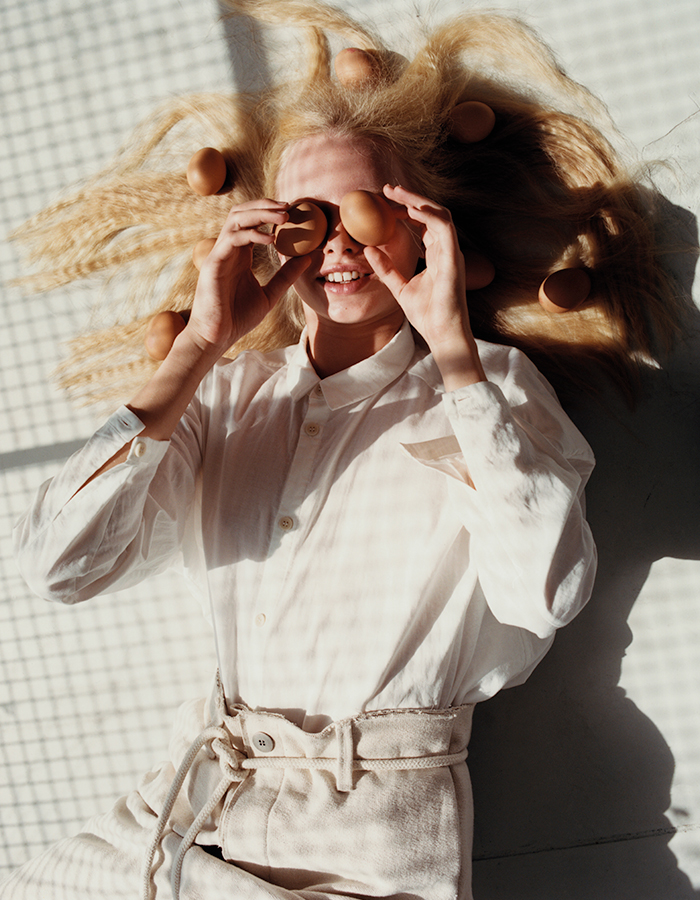

[K]: It feels like a great working environment that has an unspoken internal logic...
“There’s so many things that are unsaid between myself and Faye. We work together quite silently with very different brains. She’s the brain and I’m the scissors; we have a creative and also then a technical side. When it comes to the clothing we marry up together in that way and complement each other. The rest of the team work in a similar way, combining clothing with furniture or pieces of artwork. There’s no reason why you can't just go completely across the board and inspire each other. We embrace materials across the entire studio and never prejudge or focus in on something very narrow. The idea is that your mind is broadened by all of these things.
“What Faye does is question and unpack those rules and boundaries that you’ve learned. I think that’s what’s remarkable about the process for me and my colleagues in the studio. She will question everything, which makes you respond in a new and more interesting way to your trade.â€
[K]: You’re a pattern cutter by trade, tell us more about how that process works.
Erica: “Faye creates a concept and as a pattern cutter I will technically respond. I have my own ideas of what I would like to discover, what journey I want to go on next as a pattern cutter. Saying that, we are very loyal to our library of patterns. For example the Photographer Jacket has been with us since the second collection. We’ve pretty much featured it in every collection. The Oilrigger has been with us since the first collection. There are new patterns each season, but some are put to bed for a season or two and then they might come back in. So there’s a loyalty there to the work that we have done. It doesn’t just get made and then thrown away. It actually gets perfected with time, where you realise an improvement might be if that collar was slightly longer at the back, or if the sleeve was slightly shorter, wider, whatever it might be. Those elements develop and evolve.
“We acknowledge trade and looking back, but it’s not a pastiche of workwear. So it does get questioned, often - I will cut the shoulders off, or the arms have often been with pleats or more shaping, the pockets with more bag so it actually feels like somebody has already been in the coat. It’s already existed before you had it - like if you nick a coat from your grandpa. We all have those pieces stuck in our wardrobe somewhere, like a really good old Barbour that your dad’s worn for the last 30 years or something. I think that living, breathing existence is really important to get into the pattern cutting and into the design, whilst also remaining quite refrained from putting everything into something, because our pieces are very pared-back, simple silhouettes.â€
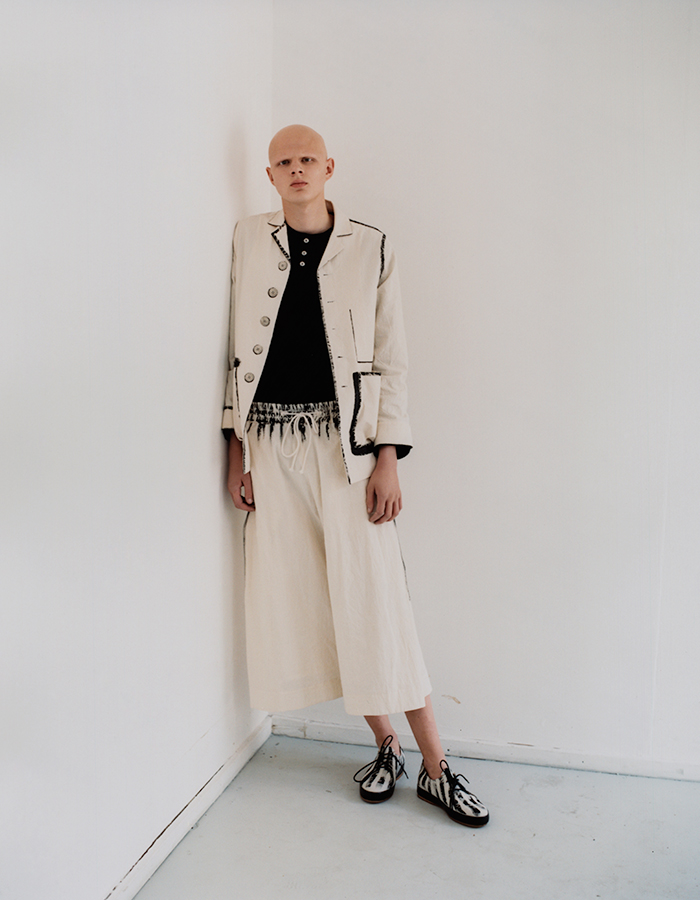

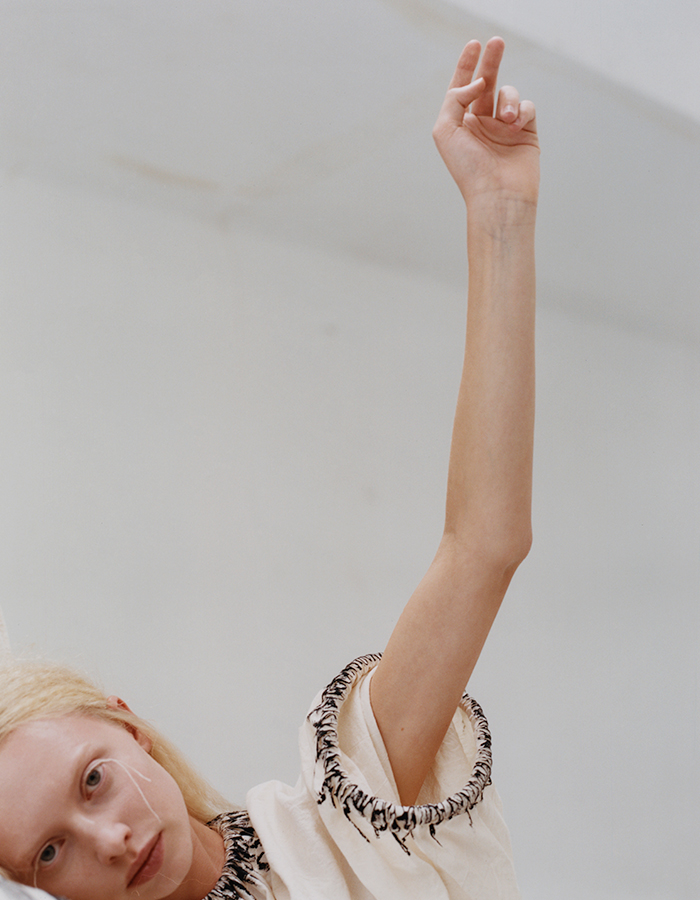

[K]: The studio obviously has a lot of connections with makers who create the furniture and design pieces, who makes Toogood clothing?
Erica: “The making is all done inside London with local factories, ones that we have worked with actually since the first season. There's a manufacturer that I met in our first season. He had three or four men working with him in a very, very tiny studio, and a cutter that would come in the evening and cut our stuff. He would take him home at one in the morning just to be able to get the factory up and running. Now they are a force of eight-to-ten men and women in a much larger unit. We have been their primary customer since then, so as we have seen our business grow, we've seen his business grow. That commitment and understanding with each other is a really strong one and one we don’t really talk about much, but those relationships are exceptionally important to me.
[K]: Its clear that real connections between people form the basis of House of Toogood, how do you see that?
“I think that’s what people desire and there's many people that work in jobs that don’t provide that connection. They sit behind a perfectly-measured desk with their perfectly ergonomic chair. Faye calls us her misfits, people that just don't fit in anywhere else. She has had many waifs and strays that have been with her for a long time. I feel like one of those, too! I've been next to her since I was born, wondering where I sit. She’s created this environment that is viable for us to create within and feel comfortable and feel like we can express ourselves and also feel supported.
“I hope there’s a sensation for everyone here that they work for Toogood but they also feel like they’re on their own path. They’re fulfilling their life, which is the main thing. We get to put a roof over their heads and get to work together.â€
